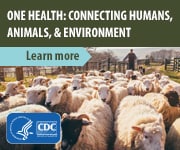Wildlife
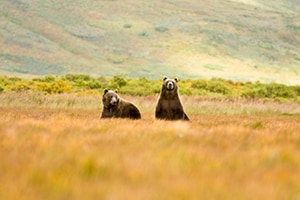
Wildlife are undomesticated animals living in nature. Wildlife have countless benefits for the ecosystem and for our health and well-being, including pollinating our food, controlling pests, and being a source of beauty and inspiration. Seeing wildlife while outside can be a fun and educational experience, and spending time outside in nature can have health benefits. However, it is important to know how to interact with wildlife safely to reduce your risk for certain injuries or illnesses. This also helps keep wildlife safe and healthy.
Wildlife may look cute or seem friendly, but they should always be enjoyed from a distance. Getting too close to wildlife may cause some animals to abandon their young, stop eating, or injure people or pets out of fear. Wildlife can also get sick from or have diseases that are harmful to people and pets. People and pets can spread diseases to wildlife, too. The best ways to keep yourself, your pets, and wildlife healthy are to keep a safe distance and wash your hands after being outdoors. Also, wildlife should never be kept as pets.
By following the Healthy People and Healthy Wildlife tips, you can protect the health of your pets, wildlife, and yourself.
Read below about certain diseases that can be spread by wildlife. Other diseases that wildlife can spread include Edwardsiellosis and Erysipelothrix.
Visit the Healthy People section to learn more about staying healthy around wildlife.
Aeromonas bacteria are commonly found in freshwater aquariums and ponds. Aeromonas bacteria can infect fish, amphibians, and very rarely, people.
How it spreads: People can get sick through open wounds or by drinking contaminated water. Aeromonas bacteria cannot spread from person to person.
Who is at risk: Anyone can have an Aeromonas infection, but young children and people with weakened immune systems are more likely to get severe illness.
Signs in wildlife: Fish and amphibians infected with Aeromonas bacteria might have discolored fins or limbs, open sores, weight loss, or bleeding.
Symptoms in people: Common signs and symptoms include nausea, vomiting, and diarrhea. Blood infections might occur in young children and people with weakened immune systems. Aeromonas bacteria can also infect open wounds.
Anthrax is a naturally occurring disease of animals caused by bacteria found in the environment. Although it is rare in the United States, people can get sick with anthrax if they come in contact with infected animals, including wildlife. Many types of wild animals can get anthrax, including bison, deer, moose, elk, bears, and more.
How it spreads: Animals can become infected with anthrax when they ingest spores in contaminated soil, plants, or water. People get infected by having contact with sick or dead animals or eating meat contaminated with spores. People can also get anthrax through a cut or scrape in the skin. Anthrax is not contagious, which means it is not spread from person to person.
Who is at risk: Anthrax is rare in the United States, but anyone who comes in contact with anthrax spores can get sick. People at higher risk for anthrax include veterinarians, livestock producers, laboratory professionals, and people who handle animal products (for example, hides, wool, or hair).
Signs in wildlife: Animals do not always appear sick, but if they do, they can get sick suddenly and die quickly. Clinical signs vary by animal species. Typical signs include fever, staggering, difficulty breathing, or seizures. Often, infected animals do not show signs of illness and are found dead before the cause is known.
Symptoms in people: The symptoms of anthrax in people depend on the type of infection and can take anywhere from 1 day to more than 2 months to appear.
- Cutaneous (skin) anthrax: A group of small blisters or bumps, a painless skin sore (ulcer) with a black center (scar) appearing after the small blisters, and swelling.
- Inhalation anthrax (from breathing in spores): Fever and chills, shortness of breath and chest discomfort, confusion, nausea or vomiting, headache, sweats, extreme tiredness, and body aches. This type of anthrax is very rare and mostly associated with an intentional spore release (bioterrorism).
- Ingestion (stomach & intestines) anthrax: Fever and chills, swelling of neck or neck glands, sore throat, painful swallowing, diarrhea or bloody diarrhea, red face and eyes, and stomach pain.
All types of anthrax have the potential, if untreated, to spread throughout the body and cause severe illness and even death.
Baylisascaris procyonis infection is caused by roundworms found in raccoons. This parasitic roundworm can infect people and other animals, including dogs.
How it spreads: Roundworm eggs are found in animal droppings. People and animals can get infected through ingestion contaminated food, soil, or items. Animals can also get infected by eating an infected animal.
Who is at risk: Anyone can get a Baylisascaris infection. Most infections are in children and others who are more likely to put dirt or animal poop in their mouth by mistake. Hunters, trappers, taxidermists, and wildlife handlers may also be at increased risk if they have contact with raccoons or raccoon habitats.
Signs in wildlife: Racoons usually don’t show signs of infection. Other infected animals might have muscle spasms, tremors, and progressive weakness. Infection can lead to death.
Symptoms in people: Signs and symptoms depend on how many eggs are ingested and where in the body the larvae migrate (travel). Ingesting a few eggs may cause few or no symptoms, while ingesting large numbers of eggs may lead to serious symptoms. Signs and symptoms of infection may take a week or so to develop and may include nausea, tiredness, liver enlargement, loss of coordination, lack of attention to people and surroundings, loss of muscle control, blindness, and coma.
Botulism is a rare but serious illness caused by a toxin that attacks people’s nerves. This toxin is made most often by Clostridium botulinum bacteria, which is found in soil, especially in aquatic environments. Under certain conditions spores of the bacteria can grow and make one of the most lethal toxins known. When people eat foods containing the toxin, they can become seriously sick, or even die, if they don’t get medical treatment quickly. Outbreaks of botulism have been linked to eating fish and aquatic animals (like beavers, seals, and whales) that were not properly prepared or stored properly in the refrigerator.
How it spreads: Birds and mammals can get botulism from scavenging dead fish. Some cases of foodborne botulism have happened after people ate home-canned, preserved, or fermented foods that were contaminated with toxin. The foods might have become contaminated if they were not canned (processed) correctly. In Alaska, most cases of foodborne botulism are caused by Alaskan traditional foods including fermented salmon heads (“stinkheads”), whale blubber (“muktuk”), seal blubber, and seal oil. People could also get botulism from contact with contaminated water or environments.
Who is at risk: Botulism is rare but anyone can get it. Infants and people who eat home-canned or home-fermented foods (including fermented fish and Alaska Native foods) have a greater chance of becoming seriously sick.
Signs in wildlife: Fish that carry Clostridium botulinum show few signs of illness, though some may have pale gill coloring or abdominal swelling. Infected birds may be weak, tired, or unable to walk, fly, or hold their head up.
Symptoms in people: Symptoms of botulism in people usually start with weakness of the muscles that control the eyes, face, mouth, and throat. This weakness may spread to the neck, arms, torso, and legs. Botulism can weaken the muscles involved in breathing, which can lead to difficulty breathing and even death. Botulism is an emergency. If you or someone you know has symptoms of botulism, see your doctor or go to the emergency room immediately.
Bovine tuberculosis (TB) is a type of TB caused by Mycobacterium bovis (M. bovis) bacteria, which are different than the bacteria that cause most tuberculosis cases in people. M. bovis bacteria are most commonly found in cattle, although the United States has made progress toward eliminating M. bovis from the cattle population. M. bovis can also be found in other animals such as bison, elk, and deer. People can also get infected with M. bovis bacteria.
How it spreads: People can get bovine TB by eating undercooked meat or raw (unpasteurized) dairy products or by breathing in the bacteria. The bacteria also can enter the body through cuts or scrapes during slaughter or hunting. M. bovis bacteria can spread between livestock and wild animals, so it is important to keep your livestock separated from wild animals when possible.
Who is at risk: Anyone can get bovine TB, but people who work with cattle, bison, deer, or elk or their products (such as through ranching, farming, butchering, or hunting) are at higher risk for exposure to M. bovis bacteria. If you are concerned about M. bovis in wildlife in your community, contact your state department of natural resources for more information. People can also be infected with M. bovis from consuming unpasteurized (raw) dairy products like milk or cheese, especially in countries where dairy industries are less regulated.
Signs in wildlife: Animals typically don’t show signs of bovine TB until later stages of disease. These signs can include weight loss, fatigue, and moist cough.
Symptoms in people: Signs and symptoms of bovine TB in people depend on how a person is infected. Infected people might have sores, swollen lymph nodes, difficulty breathing, weight loss, night sweats, fever, or intestinal discomfort. Some people don’t show signs of disease. People can live with M. bovis infection for many years before developing TB disease symptoms – this is a condition called latent TB infection. If you think you might have been exposed to M. bovis, ask your healthcare provider about being tested for latent TB infection.
Brucellosis is a bacterial disease caused by contact with infected animals and contaminated animal products like raw milk. Brucella bacteria can infect bison, elk, caribou, cattle, dogs, goats, moose, pigs, sheep, and some marine mammals.
How it spreads: The most common way people get brucellosis is by eating or drinking unpasteurized/raw dairy products. People can also get brucellosis by coming in contact with infected animals or contaminated animal tissues or fluids (like blood) and getting the bacteria in skin wounds or mucus membranes.
Who is at risk: Anyone can get brucellosis, but people who drink raw milk or work closely with animals may be more at risk.
Signs in wildlife: Most infected animals show no signs of illness. For animals that do show signs of illness, symptoms vary by animal species and can include weight loss or change in behavior. Brucellosis also affects the reproductive organs and can cause miscarriage in animals.
Symptoms in people: People with brucellosis usually become sick within 2–4 weeks of exposure, but symptom onset can begin anywhere between 5 days to 6 months after exposure. Sick people will have flu-like symptoms. Sometimes brucellosis can become a chronic illness that can be difficult to treat and potentially lead to more severe health consequences. Occasionally, brucellosis can affect reproductive organs and cause miscarriage.
Cryptococcosis is an infection caused by fungus (C. neoformans) found in the environment, particularly in soil, on decaying wood, in tree hollows, or in bird droppings (especially pigeon poop). People, birds, and other mammals like cats and dogs can be infected with the fungus.
How it spreads: People and animals can get cryptococcosis by breathing in the microscopic fungus from the environment. People can also get cryptococcosis after swallowing recreational water, drinking untreated water from a lake or river, or touching their mouth after handling an infected animal.
Who is at risk: Cryptococcosis is rare in healthy people. It most often affects people with weakened immune systems (such as those who have HIV/AIDS, have had an organ transplant, or are taking medication like corticosteroids or TNF-inhibitors).
Signs in wildlife: It is rare to see signs in birds.
Symptoms in people: Symptoms can resemble pneumonia, including cough, shortness of breath, chest pain, and fever. Cryptococcal meningitis is an infection caused by the fungus after it spreads from the lungs to the brain. Cryptococcal meningitis can cause headache, fever, neck pain, nausea and vomiting, sensitivity to light, and confusion or changes in behavior.
Dermatophilosis is a skin disease caused by bacteria that can affect people and animals. Dermatophilosis mainly affects deer, but also can affect cattle, sheep, horses, and goats. This infection is more common in moist or humid environments.
How it spreads: The bacteria spread through contact with an infected animal, contact with contaminated surfaces, and bites from fleas and ticks. The bacteria can spread to people through direct contact with an infected animal.
Who is at risk: People who handle animals, especially deer, are at higher risk for getting dermatophilosis. People with weakened immune systems are more likely to get severe illness.
Signs in wildlife: Infected animals might have matted hair, scabs, crusts, and areas of hair loss. Although some animals with severe infections may become emaciated and die, most infections are mild and will heal with time.
Symptoms in people: Infected people might have sores on the hands and arms.
Echinococcosis is a parasitic disease caused by infection with larval stages of Echinococcus tapeworms. Echinococcosis is rare in the United States but can be serious. Adult Echinococcus tapeworms are found only in dogs and related animals like coyotes, foxes, and wolves. People can be infected with the tapeworm larvae (the immature stage of the tapeworm).
How it spreads: Dogs, coyotes, foxes, and wolves become infected with Echinococcus tapeworms after eating other infected animals, like sheep or goats. They then shed Echinococcus eggs in their poop. The parasite spreads to people through eating or drinking food or water that is contaminated with the poop of infected dogs, coyotes, foxes, or wolves.
Who is at risk: Anyone can get echinococcosis but people who live in areas where the parasite is common or people who work with farm animals and dogs or related animals (like trappers, hunters, and veterinarians) are at a higher risk of infection. Echinococcus is found in Africa, Europe, Asia, the Middle East, Central and South America, and in rare cases, North America.
Signs in wildlife: Most infected animals don’t show signs of illness. However, if dogs or related animals are infected with a large number of tapeworms, they can have mild diarrhea, a variable appetite, a shaggy coat, or irritability.
Symptoms in people: Although Echinococcus larvae can invade many different organs of the body, most infected people might not have any symptoms of illness for years. The larvae can cause cysts or parasitic tumors that, while rare, can be deadly. Symptoms may include pain or discomfort in the upper abdominal region or chest, nausea, vomiting, coughing, weakness, and weight loss. Symptoms can also mimic those of liver cancer and cirrhosis of the liver.
Giardiasis is caused by the Giardia parasite, which is found on surfaces or in water, food, or soil that has been contaminated by poop of an infected person or animal. Wild animals that can spread Giardia include beavers, coyotes, primates, rodents, and raccoons.
How it spreads: You can get giardiasis if you swallow Giardia germs. Giardia spreads easily and can spread from person to person or through water, food, surfaces, or objects contaminated with poop from infected people or animals.
Who is at risk: The risk of getting Giardia from wildlife is low. The exact type of Giardia that makes people sick is usually not the same that infects animals. Anyone can get Giardia, but the following groups have a higher risk:
- People in childcare settings
- People who are in close contact with someone who has the disease
- Travelers within areas that have poor sanitation
- People who have contact with poop during sexual activity
- People who drink untreated water from springs, lakes, or rivers
- Swimmers who swallow water from swimming pools, hot tubs, splash pads, or untreated recreational water from springs, lakes, or rivers
- People who get their household water from a shallow well
- People with weakened immune systems
- People who have contact with infected animals or animal environments contaminated with poop
Signs in wildlife: Infected animals might have diarrhea or greasy poop, or become dehydrated. Some animals don’t show any signs of illness.
Symptoms in people: Infected people often have diarrhea, greasy poop, dehydration, abdominal cramps, nausea, and vomiting. Symptoms usually begin 1 to 2 weeks after infection and last for 2 to 6 weeks, but some people develop symptoms or complications that can last much longer. Some people don’t have any symptoms.
Histoplasmosis is an infection caused by fungus found in the environment, particularly in soil that contains large amounts of bird and bat droppings. Chickens, blackbirds (starlings and grackles), pigeons, and gulls have been associated with human histoplasmosis outbreaks. This disease can affect people, cats, dogs, and other mammals. In the United States, histoplasmosis is more common in central and eastern states, and the fungus also lives in parts of Central and South America, Africa, Asia, and Australia.
How it spreads: People can get histoplasmosis by breathing in the microscopic fungus from the environment.
Who is at risk: Anyone can get histoplasmosis, but infants, adults 55 and older, and people with weakened immune systems (such as those who have HIV/AIDS, have had an organ transplant, or are taking medication such as corticosteroids or TNF-inhibitors) are more likely to get severe forms of histoplasmosis.
Signs in wildlife: Most animals do not get sick from histoplasmosis. Although birds can spread histoplasmosis in their droppings, they don’t get sick from it.
Symptoms in people: Most people don’t get sick from histoplasmosis. People who do get sick from histoplasmosis can have symptoms that usually appear within 3–17 days of exposure. Symptoms include fever, cough, fatigue, chills, headache, chest pain, and body aches.
Leptospirosis is a bacterial disease that can affect people and animals. Many kinds of animals can carry the bacteria in their urine, including raccoons, skunks, squirrels, opossums, deer, and rodents.
How it spreads: The bacteria that cause leptospirosis spread through the urine of infected animals, which can get into water or soil and survive there for weeks to months. People get infected through contact with urine or other body fluids (except saliva) from infected animals, or through contact with water, soil, or other materials contaminated with urine from infected animals.
Who is at risk: Leptospirosis occurs worldwide but is most common in tropical and subtropical climates. It has been associated with contact with infected animals and activities in contaminated lakes and rivers, such as swimming, wading, kayaking, and rafting. People working directly with wild animals or cleaning up after them may be at risk for leptospirosis.
Signs in wildlife: Most infected wild animals don’t show signs of illness. For animals that do show symptoms, they can vary greatly and include fever, kidney and liver failure, and spontaneous abortions or stillbirths.
Symptoms in people: People with leptospirosis might not have any symptoms, but those who do will usually become sick within 2 days to 4 weeks of exposure and can have high fever, headache, chills, muscle aches, vomiting, jaundice (yellow skin or eyes), red eyes, abdominal pain, diarrhea, or a rash. A small number of people with leptospirosis can have more severe illness, such as liver and kidney failure, hemorrhagic pneumonia, and even death. Early treatment with appropriate antibiotics is important and can reduce the duration and severity of illness.
Mycobacterium marinum is a type of bacteria commonly found in freshwater and saltwater ponds. It mainly affects fish, but also can affect reptiles, amphibians, and people.
How it spreads: This bacteria spreads through contaminated water. People can get infected through open cuts or wounds. It cannot spread from person to person.
Who is at risk: Anyone can get sick, but people with weakened immune systems are more likely to get severe illness. People who fish or work in aquaculture are more likely to come in contact with contaminated water. The bacteria can also be found in swimming pools that are not properly cleaned.
Signs in wildlife: Infected fish might stop eating, have strange swimming behavior, develop sores, or look deformed. Infected reptiles and amphibians might have lumps, sores, or changes in skin color.
Symptoms in people: In people, the most common sign of infection is a raised bump or sore where the bacteria entered an open wound. Sores are usually on the hands or arms. Multiple sores might form a line. In very rare cases, the bacteria can spread throughout the body. Some infections get better on their own, while others might require antibiotics or other treatment.
Plague is a disease caused by Yersinia pestis bacteria that can cause illness in people and animals. In the western United States, fleas can pass the bacteria to rodents, like prairie dogs, chipmunks, wood rats, ground squirrels, deer mice, and voles, as well as other animals. Wildlife, people, and pets (dogs, cats) are at risk when they are bitten by infected fleas or exposed to the bacteria in other ways. Wildlife and pets can get sick with plague and can spread the infection to people.
How it spreads: People and animals are most commonly infected by flea bites, but touching live or dead plague-infected animals also can cause illness. People also can become infected by inhaling infectious droplets that a sick animal or person has coughed into the air.
Who is at risk: People that live in or travel to the western United States, particularly in rural areas, might be at risk. In addition, people with animal contact (for example, sleeping with infected pets in the bed) and hunters might be at risk.
Signs in wildlife: Wild rodents (like squirrels, mice, and prairie dogs) may or may not show signs of disease. Plague can cause large numbers of rodents to die off, for example, a prairie dog colony.
Symptoms in people: Bubonic plague is the most common form of the disease in people. Symptoms of bubonic plague include painful, swollen lymph nodes, high fever, chills, headache, and weakness. Other forms of plague, including septicemic plague and pneumonic plague, can cause more severe symptoms.
Rabies is a deadly neurologic disease caused by a virus that spreads primarily through bites of infected animals. Many types of mammals can get rabies – in the United States, bats, foxes, raccoons, and skunks are the wild animals most often seen with rabies. Wild animals with rabies can spread it to people and pets. Dog and cat owners should get their pets vaccinated against rabies.
How it spreads: Rabies is spread through contact with saliva or brain/nervous system tissue from an infected animal, usually through scratches or bites.
Who is at risk: Rabies in people and domestic animals is rare in the United States because of successful animal control and vaccination programs, but the disease is still found in wild animals such as bats, foxes, raccoons, and skunks. People and pets could be at risk for rabies if they come into contact with an infected wild animal.
Signs in wildlife: Wild animals with rabies often experience sudden behavioral changes and progressive paralysis. They may also have restlessness, panting, or they may attack other animals, people, or objects. Animals with rabies typically die within a few days after symptoms start. Seeing wild animals during the daytime doesn’t mean they are infected. Call a wildlife professional if you think a wild animal might have rabies.
Symptoms in people: Symptoms of rabies in people can appear days to months after exposure. Symptoms then progress to cerebral dysfunction, anxiety, confusion, and agitation. Once symptoms appear, it is almost always too late for treatment, so if you have been bitten by a wild animal, you should wash the wound immediately and see a doctor right away.
Rodents like rats, mice, and chipmunks can spread many diseases. Examples of rodent-borne diseases include hantavirus, leptospirosis, lymphocytic choriomeningitis, rat-bite fever, and salmonellosis. Preventing rodent infestations at home and avoiding contact with wild rodents is the best way to avoid rodent-borne disease.
How it spreads: People can get rodent-borne diseases through direct contact with infected rodents, such as touching a rodent or being bitten or scratched by a rodent. People can also get infected by breathing in contaminated air, touching items contaminated by rodents or their droppings, or eating food contaminated by a rodent. Mites, fleas, ticks, and mosquitoes can spread diseases to people and other animals after feeding on an infected rodent (for example, West Nile virus, tularemia, and plague). Diseases can also spread to people from rodents through consumption of bugs like beetles or cockroaches.
Who is at risk: Anyone can get a rodent-borne disease, but people who live or work in places with rodent infestations are at higher risk. Children younger than 5 years old, pregnant people, adults over 65, and people with weakened immune systems are more likely to get severe illness from rodent-borne diseases.
Signs in rodents: Signs of disease in rodents can vary depending on the type of infection, ranging from mild illness to death. Some infected rodents might look healthy.
Symptoms in people: Symptoms of rodent-borne disease in people can vary depending on the type of infection. Some rodent-borne diseases can be very serious and even deadly. Some, like lymphocytic choriomeningitis, can cause birth defects if a pregnant person is infected.
Salmonellosis is caused by infection with Salmonella bacteria, which can live in the intestines of people and animals, including wild animals.
How it spreads: People and animals can get infected with Salmonella by eating contaminated food, drinking contaminated water, or by touching infected animals, their poop, or their environment. People can get infected after contact with wild animal poop or drinking recreational water, such as lake or river water.
Who is at risk: Anyone can get sick from Salmonella, but children younger than 5 years old, adults 65 and older, and people with weakened immune systems are more likely to get severe illness.
Signs in wildlife: Salmonella bacteria live in the gastrointestinal tracts of many wild animals. Salmonella infection usually doesn’t make these animals sick. Some wild birds may have ruffled feathers, diarrhea, and tiredness.
Symptoms in people: People may have diarrhea, fever, and stomach cramps. Symptoms usually start 6 hours to 4 days after infection and last 4-7 days.
People and animals are at risk for tickborne diseases, including Lyme disease, Rocky Mountain spotted fever, tularemia, ehrlichiosis, babesiosis, and others. Ticks feed on many types of wild animals, including deer, rodents, birds, and reptiles. Although tickborne diseases can’t spread from an animal to a person or another animal directly, wild animals can bring ticks into yards, near homes, and other areas, making it more likely for people and pets to get bitten by ticks.
How it spreads: Tickborne germs spread to a person through the bite of an infected tick. During the feeding process, small amounts of saliva pass from the tick into the skin of the animal or person.
Who is at risk: People who spend time in tick habitats (grassy, wooded, or brushy areas) are at risk for tick exposure. Pets can also bring ticks indoors, and wild animals can bring ticks into yards and near homes.
Signs in wildlife: Wildlife usually don’t show signs of tickborne disease.
Symptoms in people: Symptoms of tickborne diseases can vary, but usually include fever, chills, body aches, and sometimes a rash. Some tickborne diseases can be very serious and even deadly. See your healthcare provider if you have been in tick habitat or been bitten by a tick and develop any of these symptoms.
Trichinellosis is a parasitic disease that is common among wild, meat-eating animals like bears and cougars. It also affects animals that eat plants and meat, like wild hogs and pigs.
How it spreads: People and animals can get sick by eating raw or undercooked meat from infected animals, especially bears and wild hogs.
Who is at risk: Anyone can get trichinellosis, but hunters and people who eat game meat are at higher risk.
Signs in wildlife: Most animals infected with the parasites that cause trichinellosis don’t show any signs of illness.
Symptoms in people: The first signs and symptoms of trichinellosis are usually nausea, vomiting, diarrhea, and abdominal pain. Infected people might have facial swelling and flu-like symptoms such as headache, fever, chills, and muscle pain. In severe cases, people can lose control of their movements and have heart and breathing problems.
Tularemia is a disease caused by Francisella tularensis bacteria. It is mainly found in small mammals like rabbits, hares, and rodents. People and other animals can also get tularemia.
How it spreads: The bacteria can spread through tick and deer fly bites, contact with infected animals, breathing in the bacteria, and contaminated food or water. Pet cats and dogs can get infected by eating, killing, or carrying infected rodents or small mammals in their mouth, or through tick bites.
Who is at risk: Anyone can get tularemia, but people who spend a lot of time outdoors, hunt, or dress and butcher game are more likely to be exposed to F. tularensis bacteria.
Signs in wildlife: Infected animals might have sudden onset of fever, weakness, decreased appetite, and reduced mobility.
Symptoms in people: There are several forms of tularemia in people. The most common signs of infection are fever, ulcers, and lymph gland swelling. Other symptoms include chills, headache, diarrhea, muscle aches, and weakness. F. tularensis bacteria can also infect the eyes, throat, and lungs.
Vesicular stomatitis is a viral disease that mainly infects horses and cattle, but also can infect deer, bobcats, raccoons, feral pigs, and rodents. Rarely, people can get vesicular stomatitis.
How it spreads: In animals, this virus spreads through direct contact and insect bites. The virus can spread to people through contact with infected animals (or their tissues or blood) or surfaces contaminated with saliva from infected animals.
Who is at risk: Vesicular stomatitis is rare in people, but those who handle animals are more likely to be exposed.
Signs in wildlife: Infected animals might have fluid-filled blisters around the mouth, on their feet, or under the belly. Vesicular stomatitis can also cause fever, drooling, and loss of appetite.
Symptoms in people: Infected people might have flu-like illness with fever, muscle aches, and fatigue. Some infected people also might have blisters in their mouth or on their hands. Other people might not have any symptoms.
Vibriosis is a disease caused by Vibrio bacteria, which naturally live in some coastal waters, including saltwater and brackish water. Brackish water is a mix of fresh water and salt water and is often found where rivers meet the ocean. Vibrio bacteria cause serious disease in fish, shrimp, and shellfish but also can infect people.
How it spreads: People can get vibriosis by eating raw or undercooked fish and shellfish (like oysters) or by swallowing contaminated water. Certain Vibrio species can also cause a skin infection when an open wound is exposed to saltwater or brackish water.
Who is at risk: People with weakened immune systems are more likely to get vibriosis. Eating raw seafood, particularly oysters, and exposing open wounds to salt water or brackish water can increase a person’s chance for getting vibriosis.
Signs in wildlife: Infected fish might have deep skin ulcers, skin darkening, scale loss, pale gills, a swollen stomach, or loss of appetite.
Symptoms in people: Vibriosis can cause watery diarrhea, stomach cramps, nausea, vomiting, fever, or chills. Some types of Vibrio bacteria also can cause skin infections.
West Nile virus (WNV) is carried by birds and spread by mosquitoes. This virus can infect people, birds, and horses.
How it spreads: WNV spreads through mosquito bites. Mosquitoes become infected when they feed on infected birds. Mosquitoes then spread WNV to people and other animals by biting them. Some birds that are predators (such as hawks and owls) or scavengers (such as crows) may become infected after eating sick or dead birds that were already infected with West Nile virus. Some birds that eat infected mosquitoes may also become infected. There is no evidence that a person can get infected from handling live or dead infected birds. However, you should avoid bare-handed contact when handling any dead animal.
Who is at risk: Anyone can get WNV, but people who spend time outside might be at higher risk for exposure. Adults over 60 years old might be more likely to get severe illness.
Signs in wildlife: Infected birds might have a loss of coordination, weakness, or tremors. Some infected birds, especially crows and jays, are known to get sick and die from the infection.
Symptoms in people: Most infected people don’t show any signs of illness. Some people might have headaches, vomiting, joint pain, or rash. Rarely, infection can cause inflammation of the brain (encephalitis) and surrounding tissues (meningitis).
How to stay healthy around wildlife
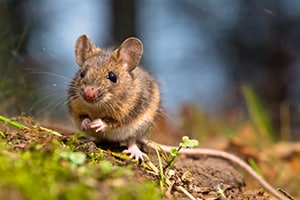
When you get too close to wild animals, you risk hurting yourself or the animal, or even getting a disease. If you spend time outdoors, keep your distance from wildlife to keep everyone safe and healthy. If an animal changes its behavior (like if it stops eating or runs away), you are too close! Even animals that look and act healthy can carry germs that can make people sick. Keeping a safe distance helps to protect you, your family, and your pets from disease. Follow these tips to reduce your risk for illnesses carried by wildlife.
Wash your hands
- Wash your hands with soap and running water:
- After contact with wild animals or their poop
- After spending time outdoors
- After spending time in places where wild animals might have been (like gardens, sheds, attics, and cabins)
- After touching or cleaning your bird feeder or bird bath
- Before you eat or drink
- Supervise handwashing for young children.
- Use hand sanitizer if soap and water are not readily available.
Keep your distance from wildlife
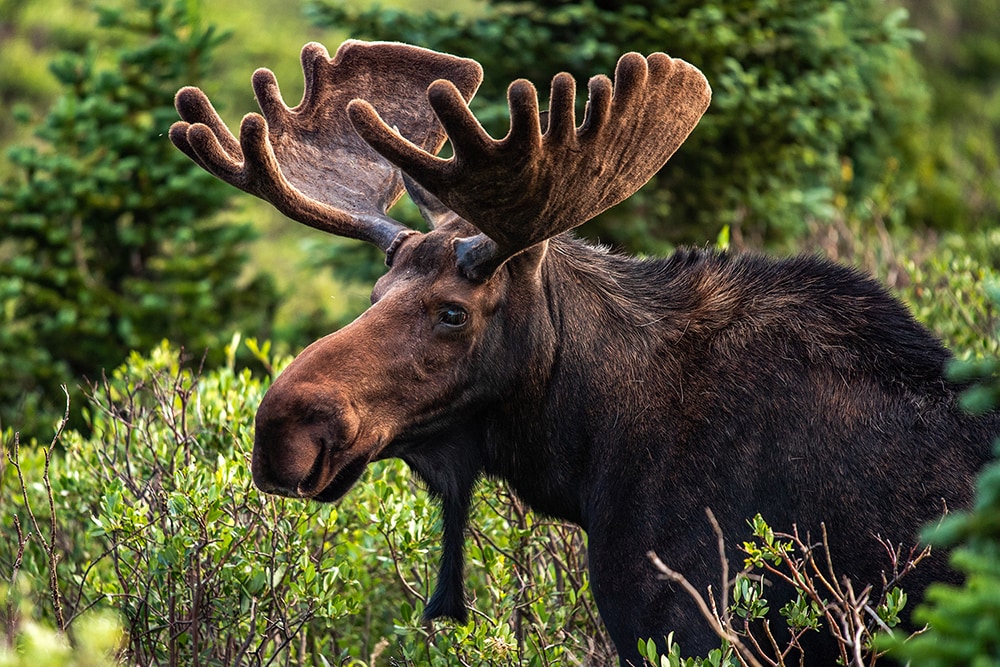
Be aware that even animals that look healthy can spread germs to people and other animals.
- Stay a safe distance from wild animals. If an animal changes its behavior, you’re too close.
- Don’t pet or feed wildlife (feeding songbirds in your backyard is okay), even if they come close to you. Slowly back away if a wild animal approaches you, even if it seems friendly.
- Don’t touch or pick up dead animals with your bare hands. Call animal control to remove any dead animals.
- Don’t adopt wild animals or bring them into your home, even temporarily.
- Teach children never to handle unfamiliar animals, even if they are someone else’s pets.
- Call animal control right away if an animal is acting strangely or out of character.
- When you’re going to a new place, research the local wildlife and how to stay safe around it.
- Stay on trails and follow visitor guidelines, including disposing of trash properly.
Be prepared before outdoor activities
- Before visiting a new place, learn about its wildlife.
- Be aware of biting insects, spiders, and venomous snakes in the area. Wear EPA-registered insect repellent, bring a first aid kit, and don’t travel alone in remote areas.
- Teach kids about outdoor safety around wildlife and while camping.
- Filter and disinfect water before drinking from a stream. Even water that looks clean can be contaminated by wildlife poop.
Hunt safely
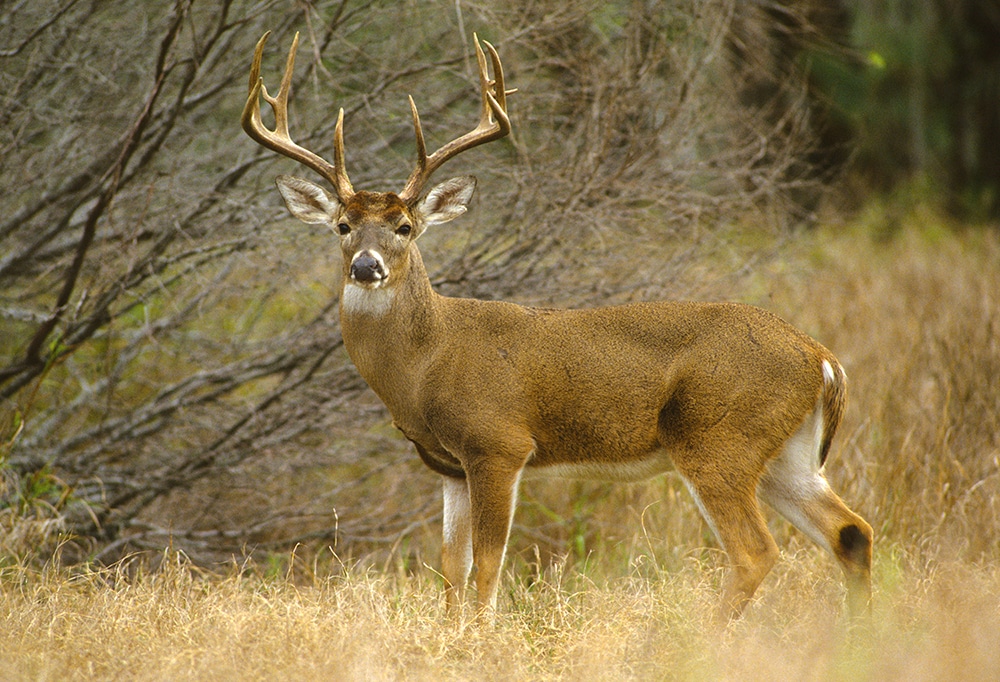
Hunters are at higher risk for certain diseases carried by wildlife. If you hunt, protect yourself and your family from diseases carried by wildlife:
- Always wear gloves when handling dead animals, even if they are freshly killed.
- Cover any open wounds in your skin when hunting or skinning animals.
- Take precautions against ticks while hunting and check yourself for ticks afterwards. Remove ticks quickly.
- Wash your hands after handling dead animals, meat, or skin and organs.
- Cook meat safely and thoroughly.
- Be aware that freezing, drying, smoking, and pickling do not kill all types of germs.
Protect your home and other buildings from wildlife
Rodents can infest homes and spread disease. Learn how to practice effective rodent control in and around your home.
- Check for and seal up gaps and holes in your home to keep out rodents and other wildlife.
- Close or screen windows and doors.
- Clean up trash and keep your garbage cans closed. Garbage and trash can attract unwanted visits from wildlife, putting both people and animals in danger. Animals that become used to people might act aggressively.
- Don’t leave food (or bait) outside to attract animals. Germs can spread when animals are close together or close to you.
- To help prevent rodent infestations, keep compost and wood piles at least 100 feet away from buildings. Rodent infestations can also attract other unwanted wildlife like snakes.
- Clean up sources of standing water, like ponds, bird baths, or empty flower pots. Mosquitoes breed in standing water. Also, pets can be exposed to germs if they drink from the same water source as a sick animal.
Keep pets safe around wildlife
Wild animals can injure or spread germs to pets.
- Keep pets on a leash when they’re outside in unfenced areas.
- Always supervise pets when outdoors.
- Don’t let pets approach or interact with wildlife.
- Don’t let pets eat dead wild animals.
- Ask your veterinarian how to protect your pets from diseases like rabies, leptospirosis, and giardiasis.
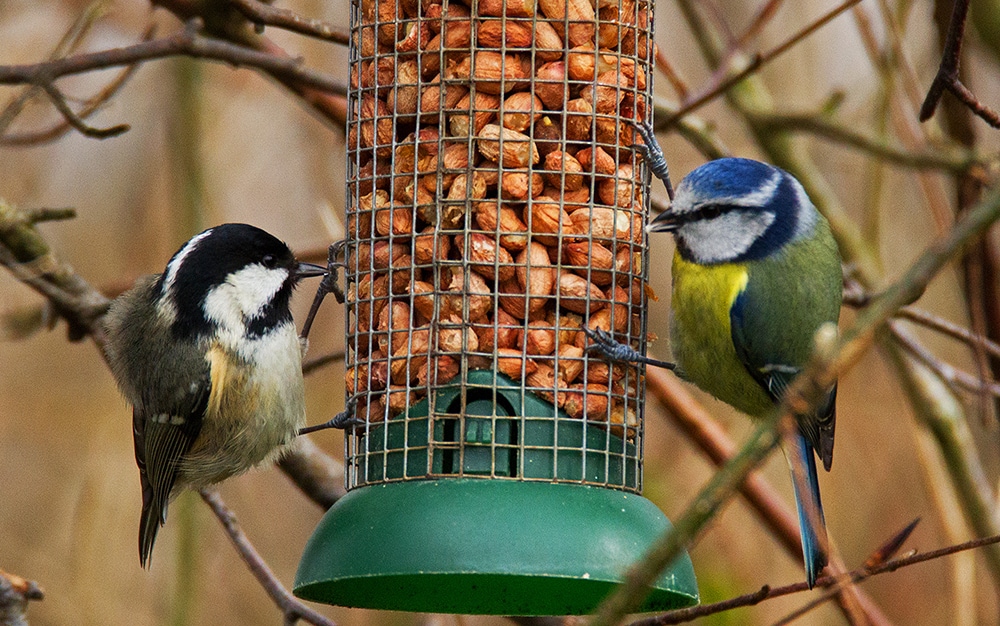
Feeding songbirds in your yard can be relaxing and entertaining. However, wild birds can spread diseases to pets and people. Feeding birds can attract other wildlife to your yard too. Follow the steps below to feed birds safely.
- Don’t touch or handfeed wild birds.
- Wash your hands after touching bird feeders or bird baths.
- Clean your bird feeder and bird bath at least once each month. If they get dirty, you might need to clean them more often.
- Clean feeders outside your house when possible. If you clean it indoors, use a laundry sink or bathtub, and thoroughly clean and disinfect the area right after. Do not clean bird feeders in your kitchen or places where food is prepared or stored.
- Follow these steps to clean and disinfect your bird feeder:
- Scrub feeder with warm soapy water to remove dirt. Rinse with clean water to remove soap.
- Soak in a diluted bleach solution (9 parts water and 1 part bleach) for at least 10 minutes.
- Rinse with water to remove any remaining bleach solution.
- Let it dry before refilling it.
- Clean and refill your bird bath weekly or when it’s visibly dirty.
- Keep pets away from bird feeders, bird baths, and the surrounding areas.
- If you find a sick or dead bird in your yard, remove your feeder and bird bath for two weeks. Clean the feeder or bath outdoors.
- If you find a sick bird, call your state wildlife agency or wildlife rehabilitator.
- If you find a dead bird, check with your state wildlife agency for information about reporting dead birds in your area.
Safely enjoy wildlife while traveling
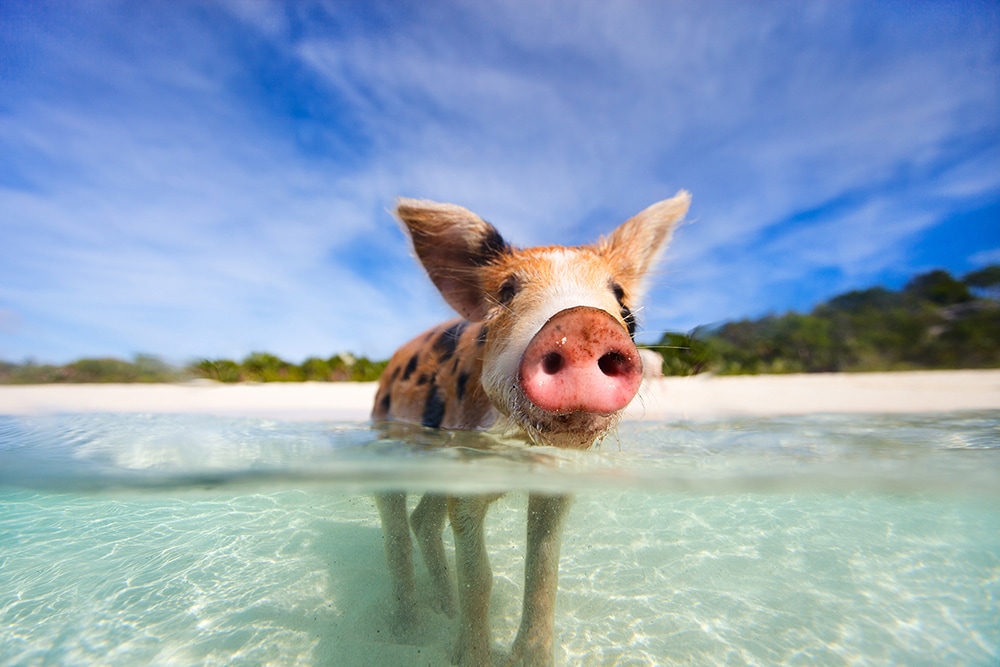
Some popular tourism locations let you interact with wild animals. Many of these experiences are with animals that can carry germs, even if they look healthy and clean. Some attractions can even harm the animals. Some examples of wildlife attractions that can be unhealthy for you and the animal are:
- Riding elephants: Elephants can carry the germs that cause tuberculosis. Elephants can also become aggressive without warning.
- Swimming with pigs or dolphins: Pigs and dolphins can spread germs to people. You can get sick just by swimming near these animals.
- Holding monkeys: Even monkeys that look healthy can spread germs to people. Monkeys can carry herpes B virus, monkeypox, tuberculosis, Ebola, and simian immunodeficiency virus.
- “Skin-cleaning” fish: Fish and their habitats (whether wild or domesticated) can have germs like Salmonella and Aeromonas
- Petting large cats like cheetahs, leopards, tigers, or lions: Big cats can become aggressive.

Enjoying wildlife attractions is part of a fun vacation. However, it’s important to research the organization before visiting; some places that call themselves sanctuaries are not actually safe or healthy environments for wildlife or for you. Typically, the organizations that are safest for people and animals are organizations that:
- Don’t let you touch or feed wild animals.
- Touching or feeding wild animals, even those that are used to people, can be stressful for the animal. When animals are stressed, they are more likely to become aggressive or get sick.
- Have rules about interacting with the animals and provide plenty of space between you and the animals.
Prevent bites and scratches
Bites and scratches from wild animals can cause injury and spread germs, even if the wound does not seem deep or serious. Keeping your distance from wild animals is the best way to prevent bites and scratches.
What to do if you are bitten or scratched by a wild animal
Animal bites and scratches can spread germs, even if the wound does not seem deep or serious.
If you are bitten or scratched by a wild animal, you should:
- Wash wounds with warm soapy water immediately.
- Seek medical attention, especially if
- The animal is venomous or produces toxic substances.
- The animal looks sick or is acting unusual.
- The wound or injury is serious (uncontrolled bleeding, unable to move, extreme pain, muscle or bone is showing, or the bite is over a joint).
- The wound or site of injury becomes red, painful, warm, or swollen. This is especially important if the person bitten is younger than 5 years old, 65 or older, pregnant, or has a weakened immune system.
- It has been more than 5 years since your last tetanus shot.
- Talk to a healthcare provider about whether you need a rabies shot.
Snake bites
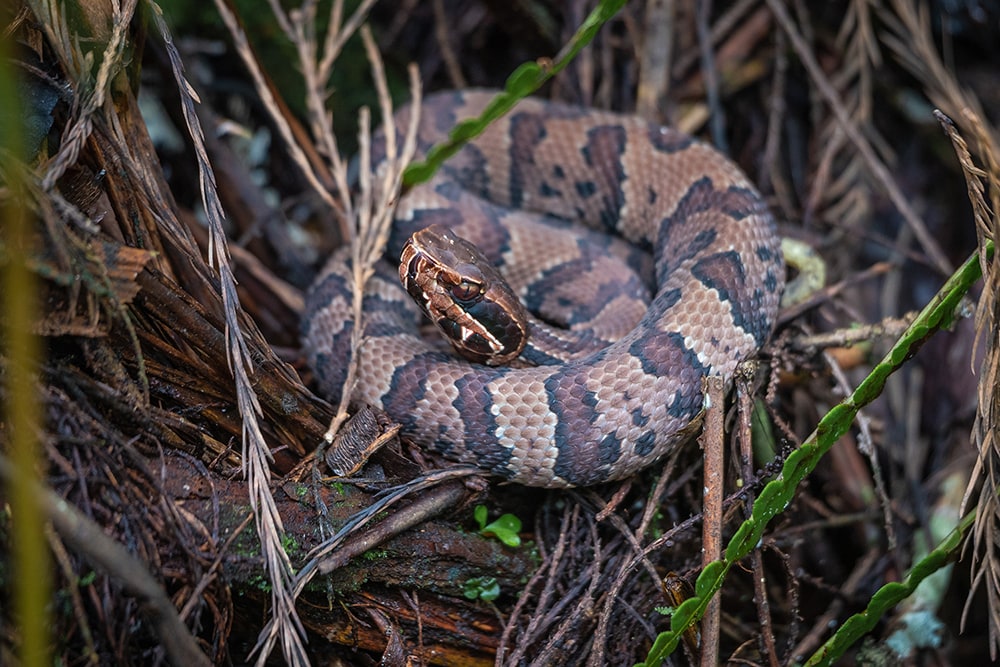
Snakes are important for a healthy environment. They eat rodents that spread germs and ticks, and some nonvenomous snakes even keep venomous snakes away from your yard. Most snakes are not venomous. People and pets who are bitten by snakes, even venomous ones, usually survive. However, you should always seek medical attention for snake bites.
Snakes bite only when they feel threatened or trapped. Stay safe by leaving snakes alone and giving them space.
Prevent snake bites at home
- If you see a snake in your home, call animal control to remove it. Don’t try to remove or trap it yourself.
- Note the size, shape, and color of any snakes you see. Contact a wildlife professional if you’re concerned about the snake being venomous.
- Keep an eye on children and pets when they are playing outside.
- Prevent rodent infestations around your home and remove brush or log piles from your yard. Rodents can attract snakes.
Prevent snake bites outside
- Watch where you step, especially if you are not on a path, or if there are logs, fallen trees, water, or other places where snakes can hide.
- Don’t let pets put their faces into logs or thick bushes where snakes might hide.
- If you see a snake, keep your pets away from it, and slowly walk around it. Give it plenty of space.
- Learn which venomous snakes live in your area and how to identify them.
What to do if you are bitten by a snake
- Try to remember what the snake looked like (size, color, head shape).
- Move away from the snake. Keep pets and other people away from it.
- If you are close to help, wash the wound with soap and water immediately and contact a medical professional.
- If you are not close to help:
- Remain calm and still if possible. Keep the area of the bite below heart level by sitting or lying down. This will slow the spread of venom if the snake is venomous.
- Get to a doctor as soon as possible. Have someone call 911.
- If you are alone, wash the wound and carefully cover it. Walk slowly to the nearest area where you can reach help or call 911.
- Don’t chase or try to kill the snake. If the snake feels threatened it might try to bite again.
- Don’t use a tourniquet or try to suck the venom out of the wound. This can make the injury worse.
What to do if your pet is bitten by a snake
- Move your pet away from the snake. Don’t chase the snake away or kill it.
- Try to remember what the snake looked like (size, color, head shape).
- Try to keep your pet calm.
- If you are close to help, take your pet to a veterinarian right away.
- If you are not close to help:
- Carry your pet if possible. Carrying your pet will help slow the spread of venom.
- If you can’t carry your pet, wash the wound, keep it dry, and cover it. Walk slowly with your pet to the nearest area where you can get them to a vet.
How to keep wildlife healthy
The health of people, animals, and the environment are closely connected. Keeping wildlife healthy helps keeps you and your pets healthy. To learn how to stay healthy around wildlife, visit the Healthy People section.
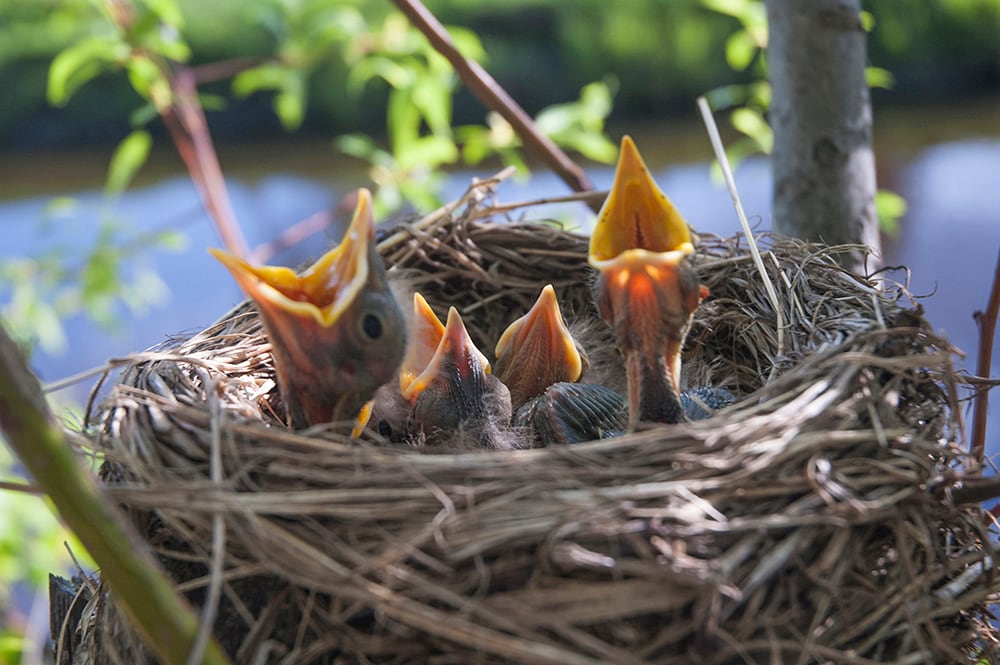
Be responsible while outdoors
- Keep pets on a leash while outdoors in unfenced areas. Pets can harm wild animals.
- Don’t feed or leave food outside for wildlife. When people feed or come in close contact with wild animals repeatedly, those animals can lose their fear of humans. This can cause wild animals to hurt people or pets or get themselves hurt while searching for food. Feeding wild animals can also change their natural migration patterns or behavior. Feeding songbirds is okay.
- Protect wildlife in national parks and local recreational areas by staying on trails and following visitor guidelines, including disposing of trash properly. Leaving trash behind encourages animals to spend time in areas where people are visiting.
Leave orphaned, injured, and abandoned wildlife alone
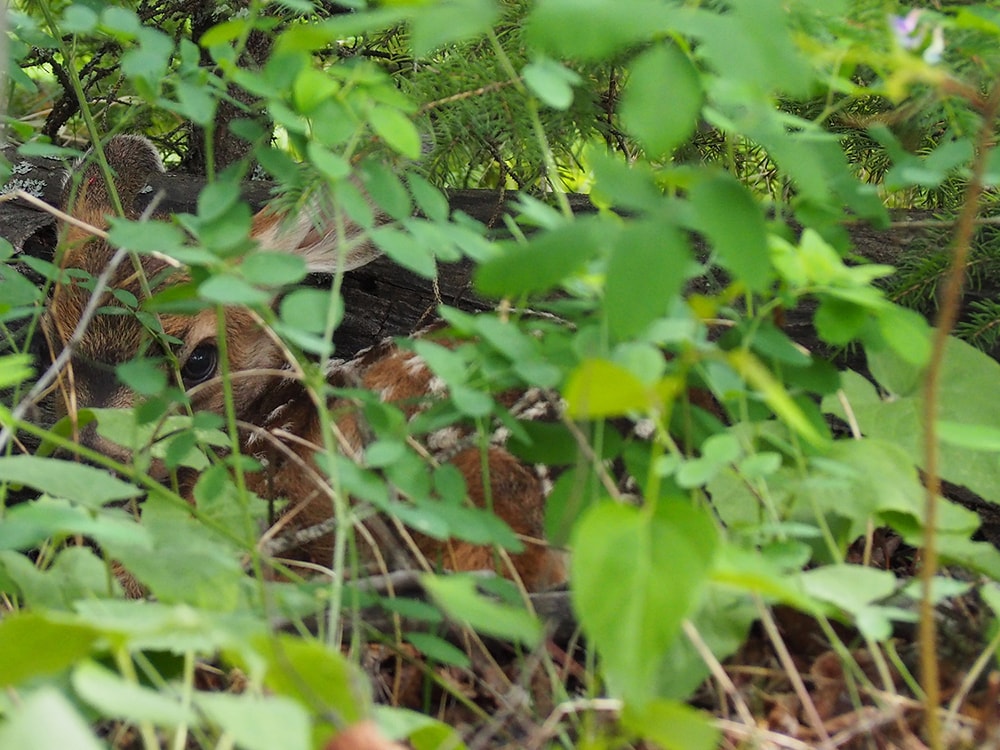
Don’t touch animals that look injured or abandoned. When you try to help animals that look orphaned or abandoned, you could just be causing them harm.
- Most baby animals left alone are not orphaned or abandoned. Usually, their parent is nearby. Many animals leave their babies for hours or even days at a time. Parents might leave their babies to search for food or hide the babies from predators.
- Baby birds often spend their first few days out of the nest on the ground. They didn’t fall out of the nest. Instead, they are learning how to fly and survive on their own. Parents are usually still close by during this time.
- Many injured animals heal on their own. You can cause more harm if you try to help. If an animal is badly injured or looks very sick, you should contact a wildlife rehabilitator or state wildlife office that will connect you with a rehabilitator.
- Don’t adopt a wild animal or bring it into your home. This can make the animal dependent on humans, which lowers its chances for survival in the wild. In addition, inappropriate food or medicine could harm the animal.
Don’t release unwanted pets outdoors
If you don’t want your pet anymore, don’t release it outdoors. Releasing pets isn’t good for the animal or the environment. Most pets released outdoors will die, and some can threaten natural wildlife populations.
Find a new home for your pet:
- Consider giving your pet to another experienced pet owner.
- Contact a nearby pet store for advice on rehoming your pet.
- Contact a local pet rescue group to see if they can help rehome your pet.
- Contact a local aquarium or zoo to see if they would accept your pet.
Staying healthy around wildlife
- Outdoor Safety—Winter Weather
- Rabies (For Kids)
- Bats and Rabies
- Venomous Snakes
- How to Prevent or Respond to a Snake Bite
- Rodent Control
- Hunting and Brucellosis
- Ticks
- It’s Open Season On Ticks
- Protect Yourself from Ticks and Mosquitos
Podcasts
Other resources
- Raccoon Latrines: Identification and Clean-up
- Helping Injured or Orphaned Wildlife
- State and Territorial Fish and Wildlife Offices
- Keeping Bats Out of Your House
Selected diseases associated with wildlife
- Aeromoniasis
- Anthrax
- Baylisascaris
- Botulism
- Bovine Tuberculosis
- Brucellosis
- Cryptococcosis
- Dermatophilosis
- Echinococcosis
- Edwardsiellosis
- Erysipeloid
- Giardiasis
- Hantavirus
- Histoplasmosis
- Leptospirosis
- Lyme disease
- Lymphocytic choriomeningitis virus (LCMV)
- Mycobacteriosis
- Plague
- Rabies
- Rat-bite fever
- Rocky Mountain spotted fever (RMSF)
- Salmonellosis
- Tickborne diseases
- Trichinellosis or Trichinosis
- Tuberculosis
- Tularemia
- Vesicular stomatitis
- Vibriosis
- West Nile Virus (WNV)
